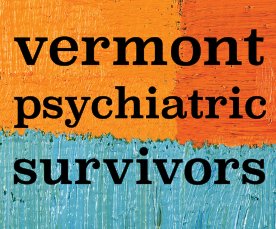Vermont’s Mental Health Integration Council held its last meeting in September. It will submit its final recommendations to lawmakers in January.
The state legislature created the Council in 2020 to help incorporate “mental health into a holistic health care system.” Flooding in July postponed its scheduled termination date by two months.
In an interim report issued last winter, the Council described Vermont’s primary roadblock to healthcare integration as a “lack of focus on the promotion of mental health” in settings such as primary care and pediatric care. Over the course of more than two years, it aimed to figure out what the state ought to do about it.
The meeting in September gave the membership – which, in addition to state officials, includes representatives from organizations like Vermont Psychiatric Survivors and NAMI-VT – a chance to refine the interim report’s advice to legislators. A draft of the final report, prepared by Mental Health & Health Care Integration Director Kathleen Hentcy, circulated in November.
It contains 11 recommendations. The first asks the legislature to remedy gaps in Vermont’s mental health parity law, specifically as it pertains to reimbursement for “specialty care services.”
The second proposes the introduction of new “training paradigms” to foster “interprofessional teamwork” among healthcare providers, who should “understand all aspects of health care systems.” The report later suggests that primary care practices might share their staff with mental health clinics when the latter experience labor shortages.
Next, the Council promotes the Veterans Health Administration’s “Whole Health” approach as a model for all providers. By the VA’s own account, the model uses a “transdisciplinary team” to deliver “personalized, proactive, and patient-driven” care.
The fourth recommendation encourages the Department of Mental Health to continue to transform its community mental health centers into what federal officials call Certified Community Behavioral Health Centers. With the help of extra Medicaid dollars, agencies like the Clara Martin Center – Vermont’s first CCBHC – will, in the report’s telling, “provide high-quality community-based care for individuals experiencing mental health, substance use or co-occurring needs.”
The Vermont Blueprint for Health, a reform initiative undertaken by the Department of Vermont Health Access, also receives a strong endorsement in the draft. The Council especially hopes to see an expansion of its DULCE (Developmental Understanding and Legal Collaboration for Everyone) program, which aims to reduce “ACE-producing (Adverse Childhood Experiences) circumstances” – such as “parent/caregiver depression, intimate partner violence, [and] food and housing insecurity” – among young families.
Joblessness, similarly, can lead to negative health outcomes. In the Council’s view, health providers should play a role, for this reason, in helping clients secure employment.
The report urges another of the legislature’s consultative bodies, the Health Equity Advisory Commission, to consider biases among providers “against people with mental illness of any kind, and particularly those who experience psychosis.” Training may help, but for now, the presence of “peer support specialists in primary care and emergency department settings” can help ensure the availability of “person-centered options for treatment.”
The final recommendation supports streamlining and standardizing documentation processes at clinics and hospitals for improved collection and sharing of data. The Council expects self-reported data from patients to prove especially valuable in furthering healthcare integration.
“Integrating the vastly complex health care systems means integrating vastly different cultures,” the report concludes. “This magnitude of change will not be accomplished by any one model of integration or by an edict from on-high.”
The draft recommendations could change before they become official next year.
Throughout its process, the Council explored the role that peers could play in a holistic healthcare system. The state’s Director of Trauma Prevention and Resilience Development, Kheya Ganguly, who joined the Council as a guest for its final meeting, shared one vision.
“I’ve always been in support of peers, but we also need to include peers with physical health issues,” she said. “Someone will come in with a chronic health issue and they’ve just received diagnosis – they don’t know anyone with this, and having a peer who may at least have familiarity with dealing with a chronic issue is really important.”
“The second thing is we need to not medicalize peers,” Ganguly continued. “One of my fears is suddenly they’re going to be wearing scrubs and they’re going to be another medical person who’s there, and we’re going to lose the benefit.”
Interim Director of Health Care Reform Pat Jones, representing the Agency of Human Services, also sat in. She pointed out that Vermont’s efforts to get its healthcare system to take mental health as seriously as physical health started long ago, as she recalled the passage of a key law in 1998.
“Back in the day, when Vermont passed the mental health and substance use disorder parity legislation, we were pretty cutting-edge. We were leaders. It took the federal government a number of years to actually catch up,” Jones recollected.
Whether the Integration Council’s work will help Vermont rejoin the vanguard remains an open question. Although lawmakers charged it to propose new legislation “where current statute is… inadequate to achieve full integration,” its draft recommendations don’t necessarily feature an obvious basis for a major healthcare bill.
Even so, Commissioner of Health Mark Levine expressed a belief that the group’s efforts would lead to action of one sort or another.
“I think most of us would agree the process hasn’t always been as straightforward as one would think,” Levine acknowledged. “We’ve addressed a lot of topics, some of which weren’t as comfortable as the others. And some may feel we did a lot of talking, and what else have we done? But that will change.”

